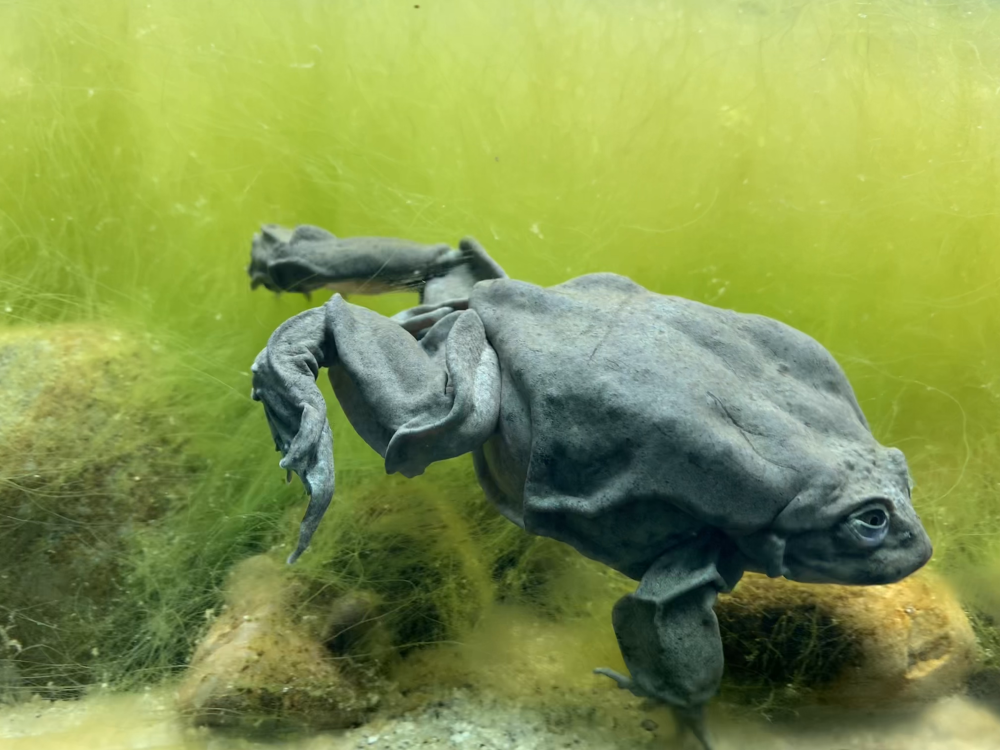Rare reptiles and amphibians can now be found lurking in a new exhibit at ZSL London Zoo which aims to showcase some of the conservation work going on behind the scenes to return rare and endangered species to the wild. Mountain chicken frogs, big-headed turtles, and giant salamanders make up just a few of the critters inside the Secret Life Of Reptiles And Amphibians house that will be open to the public from March 29.
And if you’re wondering what on Earth a mountain chicken frog is, here’s ZSL London zookeeper Dave Clarke with the inside scoop.
“These are one of the rarest animals on the planet, they only come from the islands of Montserrat and Dominica in the Caribbean,” Clarke told IFLScience. “They rely on captive breeding for their survival. We have bred them successfully here before and some of those frogs have gone back into the wild.”
“These were the first animals to breed in the [Secret Life Of Reptiles And Amphibians house] and we have six baby frogs which we’re rearing behind the scenes. They’re also one of the world’s largest frogs. They’re incredible things and this is the first time they’ve been on show to the public at London Zoo.”

A scrotum frog showing off its folds.
Image credit: Rachael Funnell, IFLScience
Other curious critters under the Secret Life Of Reptiles And Amphibians roof include the Lake Titicaca frog, often known as the scrotum frog. These baggy-skinned amphibians are endangered in the wild, mostly due to pollution, but they are also a key ingredient in “frog juice”, a remedy that’s believed to be an aphrodisiac for humans.
“These are incredible amphibians,” said Clarke. “They are one of the largest freshwater frog species that grow up to a kilo in weight. They’re just so bizarre. They’re adapted to living underwater all the time they have these excess folds of skin that allow them to absorb more oxygen from the water, because frogs can directly absorb oxygen through their skin. Because of those folds of skin, their common name is scrotum frog.”
The Lake Patzcuaro salamander is another critically endangered resident, hailing from Mexico where it’s been sustainably bred by a convent of nuns for the last 150 years. They have been breeding them for over a century to create a mysterious medicine – which does, unfortunately, sort of involve blending the salamanders – but their knowledge of how to breed these rare animals is now integral in the fight to save them, and they are active partners alongside conservation workers with ZSL.
The house is also home to two Chinese giant salamanders, a male and a female called Professor Lew. At present, the pair are separated by glass, but when the keepers start to pick up that they may be in the mood for mating, their tanks will be connected so that the two can interact.
As Clarke explained, all this work has been going on behind the scenes, but the goal of the new house is to invite people in to see the critical work they’re doing and get excited about what conservation work can achieve. You can do just that from Friday March 29 when the new exhibit is open to the public.
Source Link: Mountain Chicken Frogs, Giant Salamanders, And Scrotum Frogs Get A New Home At ZSL